Tin Can Sailor Slept in his Gun
Use controls above or click here to open this Hometown Heroes podcast in a new window
93-year-old Navy veteran Stan Filgas of Fresno, CA appears on episode #593 of Hometown Heroes, airing September 12-16, 2019. While growing up in Fresno with an older brother and three sisters, Stan learned the story of how his parents made it to the United States from their home in what is now the Czech Republic.
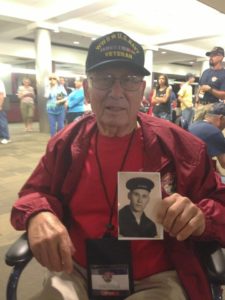
Stan Filgas ready for his Central Valley Honor Flight in 2014. For more photos, visit the Hometown Heroes facebook page.
In 1914 in the Moravia region of then Czechoslovakia, Stan’s father Cyril faced conscription into the German army in the early days of World War I. To escape that fate, he hurried to the shipyards and promised a ship captain that he would shovel coal all the way to America if he were allowed on board. Landing in Galveston, TX and eventually settling in California, Cyril then sent for his wife and daughter to join him, and the family continued to expand in Fresno. Stan remembers missing school sometimes because he and his brother would have to instead go to work with his father, hand-scraping hardwood floors. He would become a track and football star at Fresno’s Roosevelt High School, despite weight just 147 lbs.
“I was supposed to be a lightweight,” you’ll hear him recall. “But the coach says, ‘No you’re gonna go up to the varsity,’ when I was a junior, so that’s what I did.”
Filgas played linebacker and center for Coach Walt Byrd in 1941, helping the Roughriders to their first ever victory over rival Fresno HS, as well as their first CIF Central Section championship.
Not long after that championship game, Filgas was marking his 16th birthday by hunting squirrels near Academy, CA with a Japanese-American classmate named Frank Yamamura. It was December 7, 1941, and on the way home, they heard some of the first radio reports of Imperial Japan’s attack on American military installations on Oahu. Listen to Hometown Heroes for Stan’s memories of that day, including the prescient prediction made by his ag teacher the following day.
“You fellows are going to be in it,” the instructor said. “All of you will.”
Filgas would play more football as a senior in 1942, but a pledge from his principal that fall motivated him to enlist in the Navy before he turned 17. Go join the fight now, the principal promised, and a diploma would be mailed later. Stan and many of his classmates, including football teammate Zack Carr, decided to accept that arrangement. Carr went to the Army and the 75th Infantry Division, while Filgas became part of the original crew of the destroyer USS Wedderburn (DD-684).
The Wedderburn would earn seven battle stars in the Pacific, starting with the Battle of Guam in July, 1944. Stan Filgas, still just 18 years old, was a gun captain for a 5-inch/38 caliber gun. Among the memories you’ll hear Filgas share on Hometown Heroes are his first taste of combat, the powerful words of a priest after an ammunition ship exploded nearby, and what led to his unique approach to catching some shuteye on the destroyer.
“I ended up sleeping in my gun turret with a life jacket and a blanket,” Filgas recalls of a choice that ensured he was always prepared. “That was important to me to be in that gun, because they called general quarters quite often.”
Just after his 19th birthday in December, 1944, Stan and the Wedderburn were on the way to support Allied landings on the island of Mindoro in the Philippines, when Typhoon Cobra rendered a devastating impact on Task Force 38. Three destroyers were sunk, the Wedderburn was one of dozens of ships to be damaged, and Stan’s ship participated in searching for survivors of the sunken vessels. Filgas credits the survival of the Wedderburn and her crew to the savvy intervention of the ship’s captain, Charles Kendall.
“We had our fuel tanks emptied to take fuel, and he re-ballasted that,” Stan says of the captain’s decision to pump salt water into those cavities to steady the ship. “Those three that sunk didn’t re-ballast.”
790 men were lost from the destroyers USS Spence, USS Monaghan, and USS Hull, while survivors from those three ships totaled just 91. When Stan visited the National World War II Memorial in 2014 with Central Valley Honor Flight, he met one of those survivors, Pat Douhan, who shared his survival story on Hometown Heroes episode #56 in 2008.
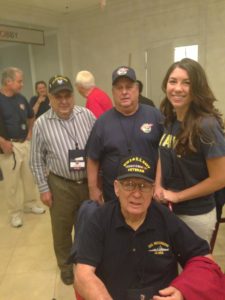
Three generations of the Filgas family visited the National World War II Memorial with Central Valley Honor Flight.
You’ll hear the unexpected story behind Stan’s only significant injury aboard the Wedderburn, and why it eventually introduced him to a doctor known as “The Rear End Admiral,” and you’ll also hear Filgas describe his closest call, when the destroyer was operating with Task Force 58 off of Okinawa.
After two Japanese planes drew away four American planes that had been patrolling overhead, another enemy plane appeared from the other direction, with the apparent intent of a suicide attack.
“We opened fire on it, and it just kept coming, and it didn’t take very long and it was there,” Filgas remembers. “It looked like it was gonna hit us, and I was scared.”
Well-timed maneuvering by the captain forced the plane’s vertical dive path to miss the Wedderburn. The kamikaze pulled up and never returned. The 19-year-old in the gun turret was relieved, but shaken. When Stan stepped out of the gun, his knee buckled, revealing the degree of fear he’d experienced. Any shame he felt for being so frightened evaporated when his friend in the next turret expressed his own concern.
“Anybody who tells you he’s not afraid,” Filgas remembers his friend Tommy saying, “Is a liar.”
Close calls like that led to the Wedderburn being labeled “The Rabbit’s Foot Destroyer,” for it’s good fortune. “We didn’t lose a man,” Filgas remembers. The “Weddy” was one of the first ships to enter Tokyo Bay, arriving on August 28, 1945, five days before the surrender documents were signed aboard the USS Missouri. Two months later, Filgas finally headed home, but by the time he arrived in Puget Sound Naval Shipyard in November, there was no celebration, save for a tattered “Welcome Home” banner now hanging down into the water. Stan remembers wondering whether anyone really cared what the sailors had done and what they had been through. 69 years later, he would finally receive a hero’s welcome, and get to share it with his older brother, Albert, who had served in the U.S. Army Air Corps during World War II. The brothers visited their memorial and others in Washington, D.C. with Central Valley Honor Flight.
“The best part was the electricity,” Stan says of his Honor Flight experience. “Being there, in that flight is not like taking a picture. It has electric to it, there’s a certain feeling that you got there.”
After his sentimental journey and emotional homecoming, Filgas received another surprise when he was finally presented with that high school diploma he had been promised more than seventy years earlier.
“I got mine,” you’ll hear him say of that long-awaited keepsake he treasures. “My buddy Zack Carr didn’t get one. He got killed.”
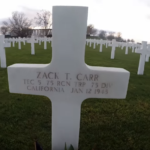
Zack Carr’s grave marker at Henri-Chapelle American Cemetery (from YouTube)
Carr, described by Filgas as someone “everybody liked,” was captured by German forces along the Salm River near Abrefontaine, Belgium while serving with the 75th Infantry Division’s 75th Reconnaissance Troop during the Battle of the Bulge. It is believed that Carr and three others with him, Robert Cain, Eugene Fallier, and Paul Schwarz, were executed by their captors. Carr is buried at Henri-Chapelle American Cemetery in Belgium.
“I’ve thought about him a lot, because he was such a big player at Roosevelt,” you’ll hear Stan explain. “It was a tremendous loss.”
Filgas is thankful he had the opportunity his friend did not, to return to America and flourish in civilian life. He and his brother launched Filgas Carpets & Floor in Clovis, CA, where Stan became known for going above and beyond to satisfy his customers. This episode is dedicated to his nephew, Kerry Filgas, who also worked in the family business. It was Kerry, a veteran himself, who was so proud of his uncle that he suggested we try to capture his story on Hometown Heroes. Kerry passed away unexpectedly in June, 2019, and is sorely missed by all who knew him.
—Paul Loeffler

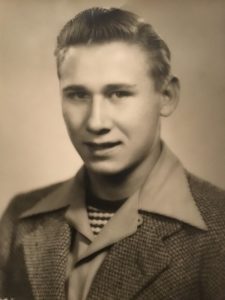
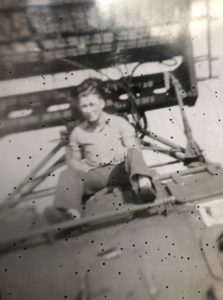
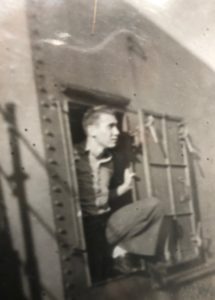
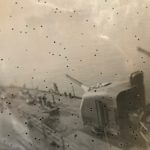
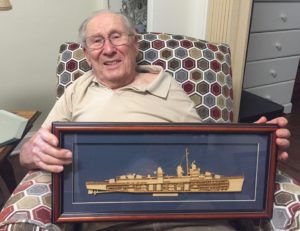
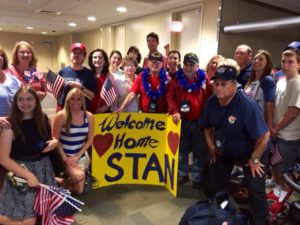
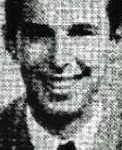

My father served on the USS Wedderburn (DD-684) from 10/43 – -3/46. as a gunner. It was nice to find this site and see/hear the description of DD-684. My father, too, was on board during the typhoon and I was told he was injured as a result. He passed away long ago but in finding sites like this and hearing stories, it helps me to learn more about my father’s life. Thank you!